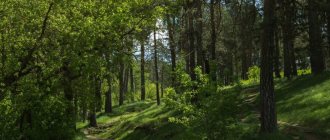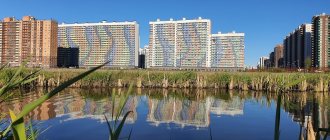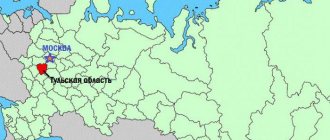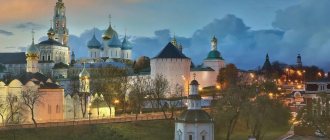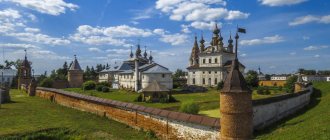Year founded: 1348
Aleksin celebrates the city day on
the 1st Saturday of August
.
In 2021,
this date is
August 7
.
In 2021, due to the pandemic, mass events in honor of the city day are canceled or may be postponed
The official founding date of the city is 1348
Aleksin
- a Russian city in the Tula region, located 60 km northwest of Tula, on both banks of the Oka River and on the Kaluga-Tula railway.
This is one of the oldest cities in this region. The official founding date of the city is 1348
, under which it was first mentioned in the Nikon Chronicle (in connection with the destruction of Aleksin by the troops of the Horde prince Temir) as a fortress on the steep left bank of the Oka. According to one version, the city received its name from the name of Metropolitan Alexy of Moscow, since it belonged to the head of the Russian Orthodox Church in 1354-1378.
It is reliably known that in 1472, the residents of Aleksin played an important role in repelling the Tatar attack on the Russian lands of the Khan of the Great Horde, Akhmat. When he approached their wooden fortress with significant forces, the townspeople did not give up and bravely defended themselves. And although the Tatars completely burned the city, these few days, while the defense lasted, were enough for the Russian troops to gather to confront the enemy and defend Moscow. The Oka line turned out to be firmly occupied by Russian regiments, and the khan did not dare to enter the battle and returned to the Horde.
For two centuries, Aleksin remained an important outpost of the defensive system of the Russian lands. Since then, and
for two centuries, Aleksin remained an important outpost of the defensive system of the Russian lands
, not only to repel Tatar raids, but also incursions from the Grand Duchy of Lithuania, and the location of the Grand Duchy "right hand shelf" In 1566, the city was included in the personal possessions of Ivan the Terrible, thus becoming a special sovereign inheritance - the oprichnina. And during the Time of Troubles of the early 17th century, he participated in the rebel movement of Ivan Bolotnikov, going over to the side of False Dmitry I. But already in 1607, Aleksin was taken by the troops of Vasily Shuisky.
Due to the expansion of the borders of the Russian state, by the beginning of the 18th century the city lost its military significance and in 1719, being by that time the administrative center of Aleksinsky district, it became part of the Tula province of the Moscow province. Since 1777, Aleksin has been a county town with a trading pier on the Oka River, serving Tula. In addition, fishing has been very developed here since ancient times.
St. Nicholas Church
In the 18th century, Aleksin gradually turned into a trade and craft city, which was facilitated by its convenient location on the navigable Oka waterway, iron ore deposits in the county, the presence of iron-making factories in the area and the proximity of Tula arms factories, and the needs of the local population for handicraft products. So, in 1728, not far from the city, the Mosolov brothers built the first ironworks). And the famous Aleksin merchant dynasties of the Azimovs, Maslovs, Zolotarevs, Rykalovs, Savostins, Shatskys specialized in the wholesale trade of livestock, grain and timber. In the 19th century, vocational schools, the first public banks, libraries, factories were opened in Aleksin, a railway was built...
In 1937, Aleksina entered the newly formed Tula region. At this time, it became a recognized industrial center of the Tula region - many industrial enterprises (chemical plant, thermal power plant and others) were built in the city at the rapid pace of the first five-year plans.
Mound of Glory with eternal flame
The city is also famous for its military exploits. Residents participated in the militia during the Patriotic War of 1812 and during the Great Patriotic War, when Aleksin played an important strategic role - in this area, Soviet troops held superior enemy forces to prevent a breakthrough on the Moscow-Tula road. And although the Nazis managed to occupy the city - it was occupied on November 29, 1941, but literally a month later it was liberated - on December 17 by troops of the Western Front during the Kaluga operation. During the war years, 7,662 Aleksin residents died a heroic death. Ten people were awarded the title of Hero of the Soviet Union.
In the post-war years, the powerful industrial development of the city continued - the reinforced concrete products plant (KZHI-480), the Aleksinsky meat processing plant and other enterprises were put into operation. New educational institutions have opened. In 1958, Aleksin became a city of regional subordination.
Aleksin-Bor is a unique natural monument
But Aleksin is known not only for industry.
Here, the climate is unique in its healing properties, the beautiful Oka River with its sandy reaches and picturesque banks, relict pine forest, healing mineral springs - all this has brought the city the glory of the pearl of the Tula region
. At the end of the 19th century, these picturesque urban surroundings became a permanent vacation spot for summer residents from Tula, Moscow and other cities of Central Russia. At different times, writers V. Veresaev, A. Chekhov, B. Pasternak vacationed here; artists N. Ulyanov, I. Levitan, V. Vatagin; composers A. Scriabin, R. Shchedrin; scientists I. Sechenov and V. Snegirev; artists V. Pashennaya, N. Smirnova, V. Kachalov and many other figures of national culture and art.
Today Aleksin, which since 2005 has been an independent municipal entity with the status of an urban settlement, is an administrative, industrial and cultural city, one of the most stable and dynamically developing in the Tula region.
Among the attractions of Aleksin the most famous are:
Aleksin-Bor is a relict pine forest, a natural monument of regional significance; the old part of the city - Zarechye, which has largely preserved the features of the Russian province of the last century, architectural monuments of the 17-19 centuries; Sorokinskoye, Petrovskoye and Ilinskoye settlements, which have archaeological value; ensemble of the Assumption Cathedral (19th century), St. Nicholas Church (18th century), Museum of Local Lore and others. Also in the city there is a Victory Memorial with an eternal flame and a mass burial of soldiers who fell during the Great Patriotic War and other memorial places. In general, Aleksin has more than 130 historical and cultural monuments, five of which are of federal significance.
The population of the city is about 57 thousand people (as of 2020).
Hometown Day
Aleksinians celebrate it on the first Saturday of August. Entertainment programs are prepared in all areas of the city, and they are a great success.
Aleksin. Sunshine to you!
Haven't saved up for Yakutia yet? Then we go to Aleksin. This could make a great weekend itinerary! Oka, pine trees and many surprises...
— According to legend, Aleksin was founded at the end of the 13th century by the youngest son of Alexander Nevsky, Moscow prince Daniil. But the official year of birth is considered to be 1348 - it was then that the city was first mentioned in the Nikon Chronicle.
According to one version (unrecognized!), Aleksin’s coat of arms has two crossed spoons as a symbol of the good taste of its residents. According to another (historical!), “in a scarlet (red) field there are two golden clubs of Hercules, placed crosswise, with their thick ends up.” Aleksinians love their coat of arms, and it can be found here and there on the city streets.
The name of the city arose as an answer to the question: “Whose?” - “Alexin!” (after the son of Prince Daniel - Alexander, whom he affectionately called Alexa, Alexya).
Aleksin is divided by the Oka River into two parts, connected by a bridge - the old one - Zarechye and the new one - Sotsgorod. Even in the worst off-season, the city looks more than picturesque.
During the navigation period (May-September) you can take a ride on the motor ship “Luch” along the Oka River. It runs 5 days a week along the Kaluga-Aleksin-Kaluga route. Schedule (approximate): Kaluga-Aleksin - 8.00 (Monday, Thursday, Saturday), 8.00, 14.00 (Friday, Sunday); Aleksin-Kaluga - 16.30 (Monday, Thursday, Saturday), 10.30, 16-30 (Friday, Sunday).
This “horseshoe for good luck” stands right at the entrance to the city along R-143 (General Korotkov Highway, 9).
“Happiness is like a butterfly. The more you catch it, the more it slips away. But as soon as you shift your attention to other things, it will come and quietly sit on your shoulder...” (Viktor Frankl, psychiatrist).
By the way, how you see Aleksin depends only on you.
On these cozy hills in the thirteenth century there was the Ilinskoye settlement - a settlement of the Vyatichi, which gave rise to the city of Aleksin.
It was here that on July 29, 1472, hordes of Tatars marching on the Grand Duchy of Moscow (in order to capture and devastate it!) found themselves at the walls of the small Aleksinsky fortress.
For those interested, there is a model of the fortress in the local history museum of the glorious city of Aleksin (Sovetskaya St., 38). The museum is open from Tuesday to Friday from 10.00 to 17.00, on Saturday until 16.00.
The Golden Horde Khan Akhmat brutally attacked the Aleksinsky fortress for two days - fiery arrows seemed to cover the entire sky! Residents fought selflessly to the last. In a nutshell: exhausted and discouraged, Akhmat eventually retreated from the Oka, and the Grand Duchy of Moscow was saved from ruin.
In 2002, in honor of these events, a memorial stone was erected on the high bank of the Oka River, where these heroic events took place . Its exact coordinates are: N 54° 30.264′ E 37° 6.175′. The inscription on the stone reads: “On July 29-31, 1472, the inhabitants of the Alexin fortress with courageous resistance resisted the invasion of the Golden Horde Khan Akhmat and thereby saved the Moscow principality from ruin.”
On August 2, 2012, a prayer service was held on the mountain (next to the memorial stone) and a capsule was laid into the foundation of the future temple-chapel. Two years have passed...
In principle, you can find many similar reasons for sadness in Aleksin. But we went there for something else! We went for interesting details.
But we went there for something else! We went for interesting details.
For example, it immediately struck us that there are many weather vanes in Aleksin. And they are not the same as in Tula
on Chekhov Street , which indicated not only the year, but also the month of construction. Are there such people in Tula?..
On Tulskaya, 5 - a giant chair. It fit perfectly into the wall of the antique store and immediately became a local landmark.
It fit perfectly into the wall of the antique store and immediately became a local landmark.
But this is an unexpected place that you should definitely visit in 2021. After all, it’s very curious what kind of letter was walled up here in 1967?..  I dare to assume that it will begin with the words: “Dear descendants, witnesses of the triumph of Communism, here you are spreading butter right on the sausage...”
I dare to assume that it will begin with the words: “Dear descendants, witnesses of the triumph of Communism, here you are spreading butter right on the sausage...”
The letter was walled up near the Khimik Palace of Culture, near the walls of which two intelligent sculptures from the times of the USSR were well preserved.
As true connoisseurs, we were simply jubilant when we discovered two more near the walls of school No. 11 (Bauman St., 6).
For the curious - plaster socialist realism in Tula.
Another undoubted advantage of Aleksin is that pine trees grow on its streets. With so many factories within the city, this is a real salvation!
For information: about 59 thousand people live in Aleksin.
Two districts - Gorushki and Bor - in some places resemble a real fairy-tale forest. And, perhaps, all Tula residents born in the USSR know Gorushki. The secret is simple - Zhalka Park! Since the late 1970s, a park unprecedented at that time has appeared in Aleksin - with numerous fairy-tale characters living among the pines. It even has a wonderful hut on chicken legs, which only the smartest October child can enter! :)) The door is in the floor, between the chicken legs... And in “Zhalka” there was a “Pull-Push” swing, welded from some factory parts (there were no such things in Tula). Much has been preserved (you can safely go for nostalgia!), but the hut, unfortunately, has not.
If anyone has a photo of that same hut, please share. A?..
By the way, another interesting sculpture has been preserved in Zhalka Park. You see her as soon as you start climbing the stairs. But you don’t even realize how good she is! :)))
At first I thought that the horse had a flipper instead of one leg, with which he tenderly trembled the naked tamer... But no. All four legs were in place. It looks like the censorship threw a towel on the horse. Or what is it?
All four legs were in place. It looks like the censorship threw a towel on the horse. Or what is it?
Another attraction of Zhalka is the Writers' Alley. A place where any Aleksinian (right in broad daylight!) can come and quote the classics with a bottle or two of wheat wine.
Lev Nikolaevich does not approve of such literary circles.
But no one seems to be asking Pushkin.
“When the wine jumps to the edges, Foaming in a circular cup, Friends, tell me - who does not cry, Rejoicing in the soul in advance?”
Soulful place. Question: “Will you be third?” sounds rather rhetorical here 
The bridge over the river with a cool name - Myshega - is guarded by lions.
Mousegrass could easily become the setting for Sleepy Hollow or Mockingjay.
The Myshega suspension bridge is traditionally hung with locks of “eternal love and light torment.”
St. Nicholas Church in the city of Aleksin (Sovetskaya St., 43) was built in 1787 at the expense of the merchant of the second guild Ivan Savostin and his brothers. In 1937, the temple was partially destroyed by atheists, and in the fall of 1941 it was also hit by a bomb.
Moreover, until 1990 there was a bus station on the territory of the temple!
On August 13, 2003, the temple was completely consecrated after restoration.
The architecture in Aleksin is very diverse. It's not boring to walk
A little gothic on Karl Marx Street.
“Pink castles” on Friendship Street...
Merchant mansions on Sovetskaya Street. In the house of the Maslov merchants (No. 38), for example, royalty stayed more than once. Both Alexander I and Alexander II visited here. This is how Andrei Bolotov wrote about this house: “The house is great, beautiful and the best in all of Aleksin.”
On the same Soviet street, pure Suprematism suddenly appeared 
And here is such a nice little house in the style of old traditions.
And this bastion, born in 1940, stands at the intersection of Mira and Lenin streets. There are two of them! They look stern and unapproachable.
I bet there was once a cinema here (the intersection of Tulskaya and Bazarnaya streets).
And next door there is “scenery” with all the signs of a decent mansion. I hope it will be restored someday. It would be beautiful.
But street art in Aleksin is rather poor... Or did we just go to the wrong place? Basically - custom-made in naive style. 
On Friendship Street they found this artifact. They tried to follow the arrow, but the shelter . Probably well camouflaged.
They tried to follow the arrow, but the shelter . Probably well camouflaged.
Lenin himself! Stands on Freedom Square. It was installed in 1937. Some enemy bird tried to peck out the leader’s brain, but he did not lose optimism and still confidently calls the Aleksinians to a bright future.
Not far from Lenin there is a small monument to the Komsomol hero Vladimir Fedorovsky. He was a partisan liaison in 1941. During one of the missions he was captured by the Nazis and executed.
On a larger scale, the feat of the Aleksinites during the Great Patriotic War is immortalized in the Memorial on Victory Square...
...and on the Mound of Glory, which was built in 1965, 10 km from the city. When driving past the mound, do not forget to honk your horn (not a public, but persistent tradition).
Of course, we visited the Berov estate - the former possession of Prince Ivan Petrovich Tyufyakin. Exact coordinates: N 54° 28.970′ E 36° 59.793′. There was already a full-fledged gulbarium about her on myslo. I won't repeat myself. I suggest you just see what the ruins look like in early December.
Real trash. Ready set for horror films.
Residents of neighboring houses and guests of the estate do not hesitate to shit in the state rooms, a forest grows inside, and the walls are about to collapse...
In general, there was no trace left of the beauty 
Next to the estate there is a picturesque outbuilding with columns (Chekhova St., 5). I think it deserves attention.
The cat Bayun lives with him 
Another interesting place is the Ryurikovo railway station. Exact coordinates: N 54° 27.310′ E 37° 10.777′. It is 10 kilometers from the center of Aleksin. Finding such mansions “a la Russe” in the middle of nowhere is something!
The Ryurikovo station was built under Nicholas II. This was done specifically for high-ranking people who came to the Pershin estate to hunt (this is another 20 miles from the station). Hunting trips were celebrated with unprecedented pomp. The hunting staff had its own brass band.
The estate itself was built much earlier - during the reign of Catherine II. The banker Lazarev, known for bringing a diamond for the imperial crown (the third largest in the world!) from India, was involved in its construction. In its best years (from 1887 to 1914), the Pershinskaya estate belonged to the uncle of Nicholas II, who was popularly called “the crafty one.” Alas, alas, nothing of the estate’s luxury has survived.
There was even a station church at the station.
The station, by the way, is operational. The passenger train stops in Rurikovo twice a day (9.42 and 18.48). We were unable to get inside the building - the barn lock was in the way.
There is a small spring next to the platform.
Aleksin left an ambiguous impression: on the one hand, he is very sincere, and on the other, he is somehow restless, lost or something... A city with enormous potential, but without a confident master’s hand.
“The light of the domes - Aleksin! The greenery of the gardens - Aleksin! The air of the forests - Aleksin! This is Russian land! Good luck to you, Aleksin! Sunshine to you, Aleksin! Peace to you, Aleksin, forever!” (as it is sung in the anthem).
Want to share your “travel stories”? Write in a personal message to Tatyana Afanasyeva And long live our common endless and cheerful “Gulbari”!
To complete the picture: places in our native Tula province that we have already walked through and which can become your new route 
Belev Byaki Epifan Kolosovo Bald Mountain Tarusa Berov Manor House Fedyashevo Khruslovka Chekalin
Gallery
show all photos
Survey
Aleksin! And I immediately remember...
About the city
“Our small town, well-trodden and walked up and down by its restless inhabitants countless times, has nestled here, among greenery and pine trees, on picturesque hills, on a winding river flowing between them...
The river divided the city into two halves, and a bridge connected them into a single whole. The bridge stood on powerful, reinforced concrete, oval-shaped supports, between which there was enough space for navigation. The height of the bridge seemed excessive when looking from above at the water running away far below and the barges passing by. The reason for this was the peculiarity of the landscape - one bank, high, steep, flew up. There, at the very top, stood a temple, so white that it hurt the eye. Its golden domes sparkled in the blue sky. The other bank, on the contrary, was gentle and flat and ran into the distance. On it, as a continuation of the bridge, a long embankment laid with slabs was built. The bridge had a monumental appearance and often appeared on anniversary postcards as a kind of calling card of the city.
You always become attached to such towns. Especially if you were born and raised here and know every bush, ditch, every path in the coastal thickets. When everything has been explored, looked at, tried. When all the buildings and the central buildings with their outlines were deeply etched into the memory, no matter which way you looked at them. In childhood, the streets seem like endless avenues, only later do you realize how small, narrow and crooked they are. They are dear to the heart and with their curvature they exactly repeat the labyrinths of your soul, which grew up in this city. Big cities are always similar to each other, they are difficult to remember, but small ones are remembered entirely. There are always a great many stories here, their trusting childhood memory absorbs them and carefully stores them later. Here, everything that happens becomes an event, and holidays are like a fairy tale, because they happen rarely. Most of all there is nature here, it replaces the holidays. Nature is incredibly beautiful in these places and changeable at different times of the year. She’s close – you just have to reach out your hand!..”
excerpt from Yuri Khor’s story “Shmakov’s Story”
General information
Aleksin is the administrative center of the Aleksinsky district of the Tula region. Located in a picturesque hilly area on the banks of the Oka River. Distance to Moscow: 150 km (by car), 90 km (shortest by air), to Tula: 55 km (by car), shortest (by air) - 48 km (to the southeast), to Kaluga: 90 km (by car), the shortest (by air) is 51 km (to the west).
Aleksin's coordinates. Geographical latitude: 54°31′, Geographical longitude: 37°5′, Altitude above sea level, meters: 160.
Moscow time.
The territory of the city occupies: 43 thousand km.
Demography
Based on the results of the 2010 census.
The total permanent population in the Aleksinsky district is 70,745 people, including 31,247 men (44.2%), 39,498 women (55.8%).
Urban population: 61,738 people (87.3%) of which 27,016 are men, 34,722 are women.
Rural population: 9007 people (12.7%) of which 4231 are men, 4,776 women.
Connection
Aleksin city telephone code: 48753
Information: 8-289
Aleksin postal codes: 301360—301370 (301360 – main post office)
Official websites of the city
https://www.aleksin.tula.ru/ - official website of local authorities of the Aleksinsky district
https://www.aleksingrad.ru/ - portal of the Aleksin city administration
| Reception of recyclable materials in Aleksin From time to time, someone asks whether it is possible to take something for recycling somewhere in Aleksin. We don’t have developed infrastructure yet, almost everything... |
| Age of Aleksin's buildings At the moment, the map contains mainly data on multi-apartment residential buildings taken from the website of the Ministry of Housing and Public Utilities. Author: Ivan Potapov |
| Memorial plaques of Aleksin Address Subject of dedication of the photograph Aleksin, microdistrict Old Town st. Tulskaya, 97 The Aleksin merchant Ivan lived in this house at the beginning of the 19th century... |
| Map of Aleksin Detailed map of the city of Aleksin, Tula region with streets and house numbers. Bigger |
| List of streets with indexes The street has a name, that's what it's called. And what difference does it make why it is this way and not otherwise. But if you don't... |
| Sightseeing tour of Aleksin Description of the route beginning: Mira St., House of Culture named after. Bondar. 1. on foot. up Mira Street (1 km) to Victory Square 2. car…. |
| The official symbols of Aleksin were approved on March 8, 1778 (by Empress Catherine II of Russia), the coat of arms of the city of Aleksin, composed by Count Francisco Santi. In the description... |
| Demographic situation in Aleksin Population dynamics of the city of Aleksin. Year Population, thousand people 1856 2.5 1897 3.5 1913 6.1 1931 3.4 1939 6.5… |
